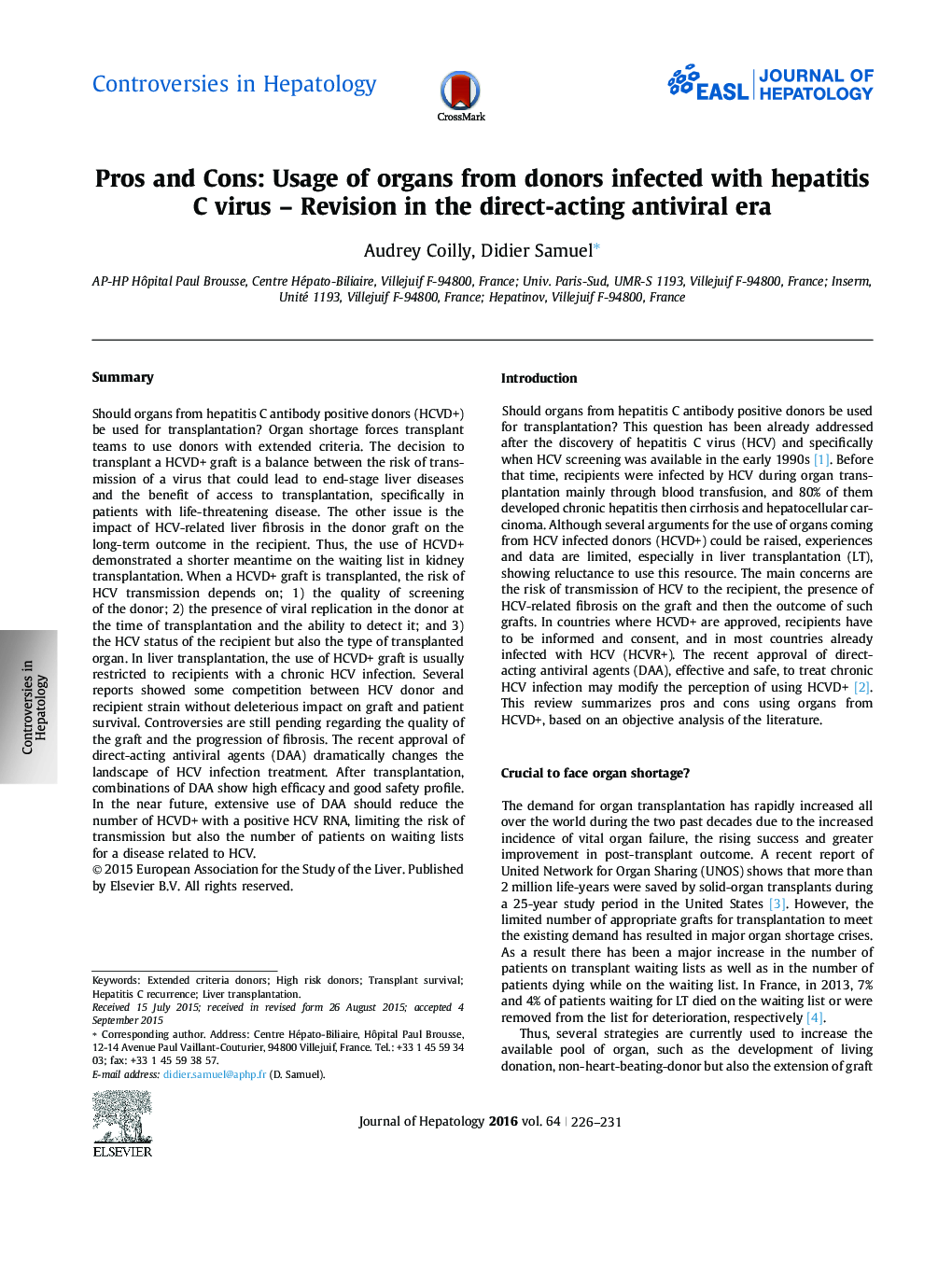| کد مقاله | کد نشریه | سال انتشار | مقاله انگلیسی | نسخه تمام متن |
|---|---|---|---|---|
| 6102294 | 1211114 | 2016 | 6 صفحه PDF | دانلود رایگان |

SummaryShould organs from hepatitis C antibody positive donors (HCVD+) be used for transplantation? Organ shortage forces transplant teams to use donors with extended criteria. The decision to transplant a HCVD+ graft is a balance between the risk of transmission of a virus that could lead to end-stage liver diseases and the benefit of access to transplantation, specifically in patients with life-threatening disease. The other issue is the impact of HCV-related liver fibrosis in the donor graft on the long-term outcome in the recipient. Thus, the use of HCVD+ demonstrated a shorter meantime on the waiting list in kidney transplantation. When a HCVD+ graft is transplanted, the risk of HCV transmission depends on; 1) the quality of screening of the donor; 2) the presence of viral replication in the donor at the time of transplantation and the ability to detect it; and 3) the HCV status of the recipient but also the type of transplanted organ. In liver transplantation, the use of HCVD+ graft is usually restricted to recipients with a chronic HCV infection. Several reports showed some competition between HCV donor and recipient strain without deleterious impact on graft and patient survival. Controversies are still pending regarding the quality of the graft and the progression of fibrosis. The recent approval of direct-acting antiviral agents (DAA) dramatically changes the landscape of HCV infection treatment. After transplantation, combinations of DAA show high efficacy and good safety profile. In the near future, extensive use of DAA should reduce the number of HCVD+ with a positive HCV RNA, limiting the risk of transmission but also the number of patients on waiting lists for a disease related to HCV.
Journal: Journal of Hepatology - Volume 64, Issue 1, January 2016, Pages 226-231